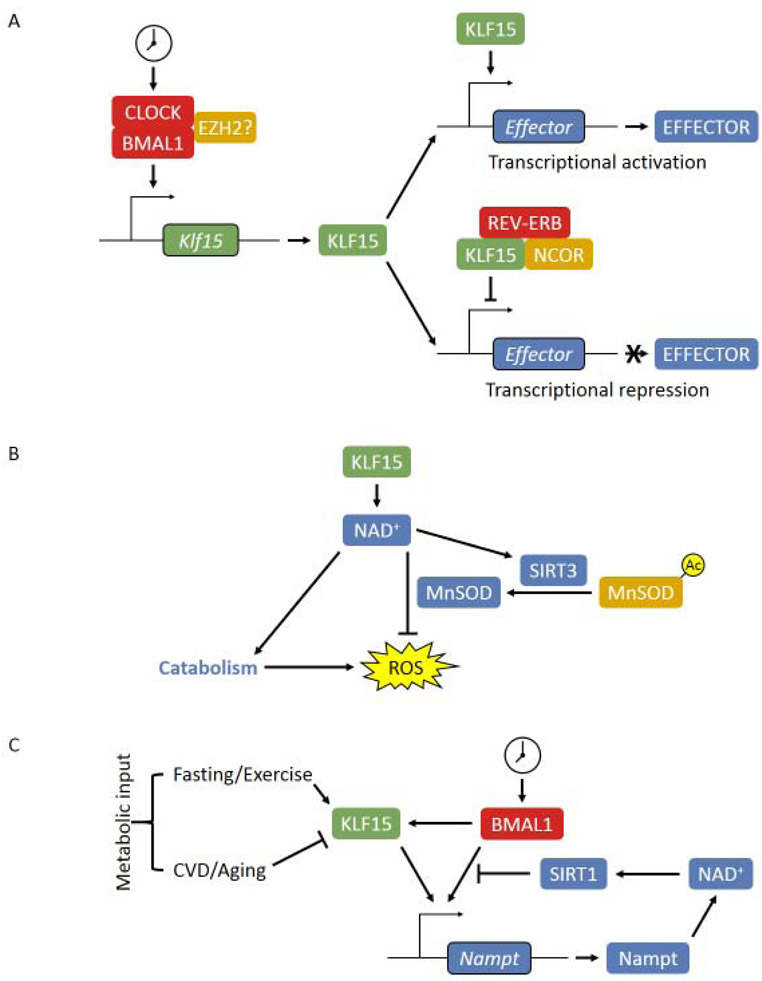Figure 2. Cardiac slave clock KLF15.
(A) Circadian regulation of KLF15 and its slave clock function in both gene activation and repression. (B) KLF15 coordinates catabolism and ROS clearance in the active phase by regulation of myocardial NAD+ level. (C) The dual regulation of BMAL1 and KLF15 on cardiac NAD+ biosynthesis. Both BMAL1 and KLF15 activates Nampt transcription through direct binding on the promoter/enhancer. The increased NAD+ level activates SIRT1 activity, which deacetylates BMAL1 and histone H3 at the cis-acting site and suppresses the transactivation of BMAL1, forming a feedback inhibition loop. Additionally, KLF15 is subjected to the regulation of various metabolic inputs, which fine-tunes the circadian oscillatory expression of Nampt to achieve precise control of cardiac NAD+ level.

